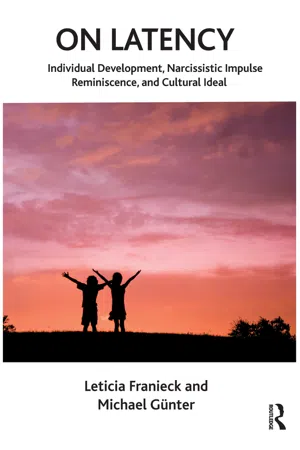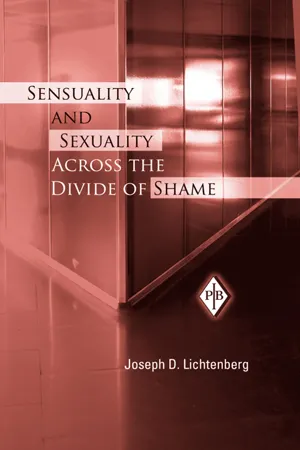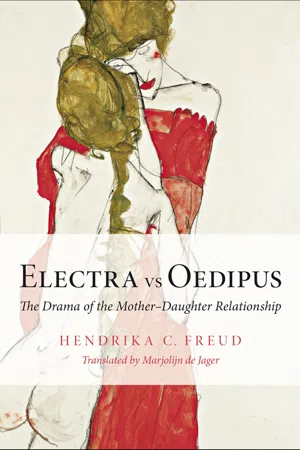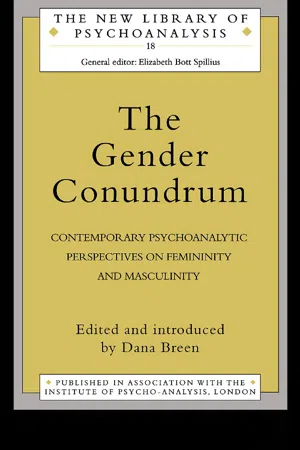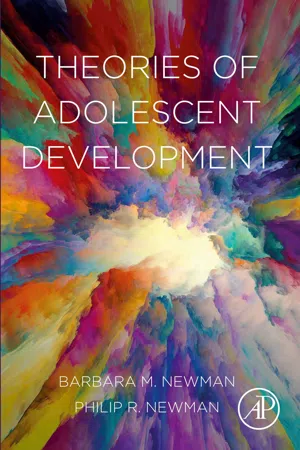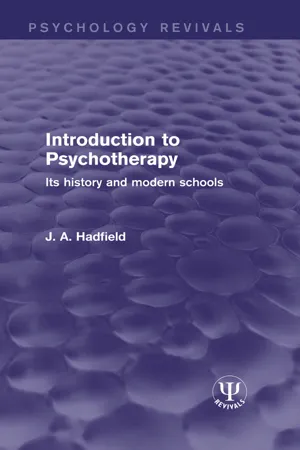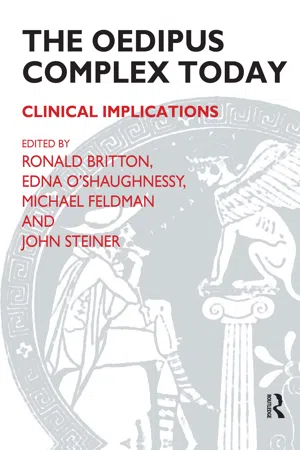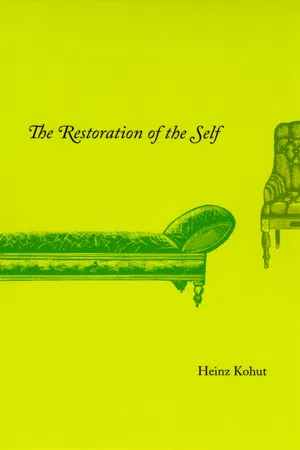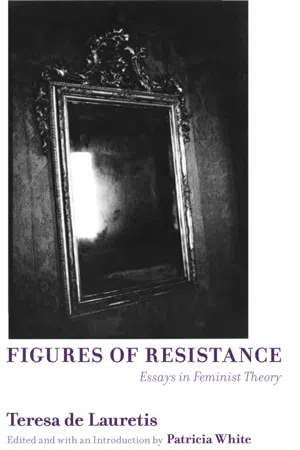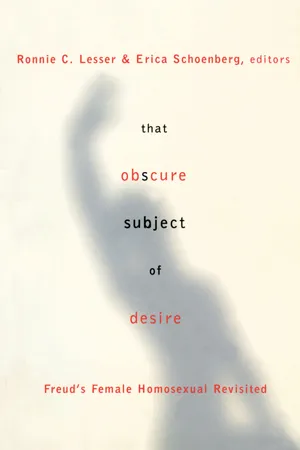Psychology
Oedipus and Electra Complex
The Oedipus complex, proposed by Sigmund Freud, refers to a child's unconscious desire for the opposite-sex parent and rivalry with the same-sex parent. The Electra complex, proposed by Carl Jung, is a similar concept for girls, involving a girl's unconscious desire for her father and rivalry with her mother. These concepts are central to psychoanalytic theories of personality development.
Written by Perlego with AI-assistance
Related key terms
12 Key excerpts on "Oedipus and Electra Complex"
- eBook - ePub
On Latency
Individual Development, Narcissistic Impulse Reminiscence and Cultural Ideal
- M. Leticia Franieck(Author)
- 2018(Publication Date)
- Routledge(Publisher)
According to Freud, the Oedipus complex is a universal phenomenon that emerges between the ages of three and five (named by him as the Oedipal phase of libidinal and ego development or also phallic phase) and its resolution marks the beginning of the latency period. The Oedipus complex can be defined as the organized set of loving and hostile desires (group of mostly unconscious ideas and feelings centering on the wish to possess the parent of the opposite sex and eliminate that of the same sex), which the child feels in his or her relationship with their parents (Laplance and Pontallis, 1967) and which is closely related to the castration complex, especially with its prohibitive and normative function, which will contribute to superego formation. For the boy, the castration threat terminates the Oedipal conflict and the boy is forced, out of fear, to abandon the wish for the possession of his mother in rivalry with his father. For the girl, the awareness of castration (or the lack of a penis) confirms the threat of castration and initiates the Oedipus complex. She is forced to give up the wish for a penis in relation to the first love object and turns to the father as her love object, wishing for babies instead of the penis. According to Freud, the resolution of the Oedipus complex consists in giving up the desire to possess the parent of the opposite sex under the pressure of repression in identifying with the parent of the same sex (Etchegoyen, 2002). In the Freudian framework the concept of the Oedipus complex is the central element and has a basic role in the building of the personality structure as well as in the orientation of human desires. Although this concept has been revised and elaborated in current psychoanalysis, it is as relevant as in the beginning, especially in relation to ideas about the role displayed by triangulation in mental health and social adaptation - eBook - ePub
Psychoanalytic Concepts and Technique in Development
Psychoanalysis, Neuroscience and Physics
- Florence Guignard(Author)
- 2019(Publication Date)
- Routledge(Publisher)
9Oedipus with or without ComplexFreud established the metapsychological models of the Oedipus complex, the castration complex and the infantile neurosis as the prototype of the transference neurosis on the basis of his discovery of a diphasic development of infantile sexuality, two phases separated by a so-called period of latency during which the child’s instinctual drive interests turn away from the search for direct satisfaction and are more oriented towards the universe of knowledge.Resulting from the formation of an ideal superego through identifications with the parental couple and with the representatives of the earlier generations, the double recognition of the difference between the genders and the generations constituted the reference point of the emerging psychic organisation because it was the identificatory point of relay with parents who guaranteed the supremacy of the reality principle over the pleasure/unpleasure principle. Thus, puberty occurred on an already “cultivated” terrain, in all the senses of the term, setting limits to the retroactive effects of the identity crisis of adolescence.The concept of “complex” thus implies a precise organisation and dynamic of the elements that constitute it. Even if, in the last part of his work, Freud reconsidered some points of his definition of the Oedipus complex, he constantly reaffirmed its structure so that even today it remains a major point of reference for psychoanalysts. For example, an author like Paul-Claude Racamier (1989) chose to create the concept of “antœdipus ” to develop his discoveries on schizophrenic functioning, thereby maintaining the first reference to the structure of the Oedipus complex as Freud described it.Nevertheless, the field of psychopathology has not exhausted the question of the definition of the Oedipus complex: Freud always included in his descriptions the psychosocial dimension of this complex. We know that the meeting-points of these two series of variables – psychopathology and civilisation – run through the whole of Freud’s work (Freud, 1907, 1908, 1912–1913, 1921, 1930, 1940a). Furthermore, since Sándor Ferenczi (1932) and Michael Balint (1959), we can no longer ignore the role of trauma in psychic organisation. Finally, many recent contributions study the delicate question of the transmission of psychic events, in particular, traumatic events (Faimberg, 1993), across the generations. - Joseph D. Lichtenberg(Author)
- 2011(Publication Date)
- Routledge(Publisher)
CHAPTER 2
The Oedipus Complex in the 21st Century
INTRODUCTION
After 100 years of psychoanalytic theorizing about the Oedipus complex, is reconsideration either necessary or valuable? What new perspectives or developmental processes warrant a revised conception? I cite seven changed perspectives that I discuss in detail:1. The distinction between sensuality and sexuality and the role of culture presented in chapter 1 .2. The complex interplay among interactive, intersubjective, and self-regulation. 3. The continuity since birth (and before) of triadic relationships. 4. The pull exerted on oedipal sexuality by attachment motivations and strategies. 5. The subversive, pernicious, and transgressive influence potential in sexual motives and desires. 6. The role of power, possessiveness, and envy. 7. The maturational influence of a time line of past, present, and future; of an autobiographical organization; and of reflective capacity.In this chapter, I challenge the view that the oedipal phase is driven by repressed universal unconscious fantasies of sexual possession of the parent of the opposite gender, murder of the rival parent, fear of retaliative castration, or penis envy. I regard the romantic love of the 4- to 6-year-old child as an emergent experience of body sensation and emotional relational desires that takes its form from existent and developing patterns of intrafamily relatedness. The child’s patterns of relatedness form as expressions of his or her nonsexual motivations and sensual and sexual desires in the context of continuous influence (regulation) by parental responses both to the child and to each other. At any moment, past patterns of relatedness and present desires congeal into affectively charged lived experiences comprised of patterns of behavior, conscious thoughts and emotions, and elaborations into conscious and unconscious beliefs and fantasies. I describe explicit patterns of intrafamily relationships and the child’s implicit modes of relational knowing that develop in sensual and sexual intimate exchanges. Although fantasies importantly elaborate the relatedness patterns of lived experience, neither intrafamily relatedness patterns nor fantasies alone determine the path taken during the oedipal phase. Both explicit and implicit relational patterns and conscious and unconscious fantasies contribute to forming expectations that propel the child into each next moment of lived experience. That said, as I discuss, fantasy elaborations of sexual desires inevitably play out as more or less problematic subversive and transgressive conflicts.- eBook - ePub
Core Concepts in Classical Psychoanalysis
Clinical, Research Evidence and Conceptual Critiques
- Morris N. Eagle(Author)
- 2017(Publication Date)
- Routledge(Publisher)
3 The Oedipus Complex Does the Oedipus complex exist? Introduction The main issue I address in this chapter is the question of the evidence for the existence of a universal Oedipus complex, defined by Freud (1900, p. 262) as incestuous wishes toward the opposite sex parent and rivalrous and hostile wishes toward the same sex parent. Although the existence of a universal Oedipus complex may no longer be uniformly posited as a core assumption of all psychoanalytic “schools,” there is little doubt that it occupied a central place in Freudian theory and continues to occupy a central place for many analysts. Freud (1905) writes: “With the progress of psychoanalytic studies the importance of the Oedipus complex has become more and more clearly evident; its recognition has become the shibboleth that distinguishes the adherents of psychoanalysis from its opponents” (p. 226, fn. 1, added in 1920). He also writes: “I venture to say that if psychoanalysis could boast of no other achievement than the discovery of the repressed Oedipus complex, that alone would give it a claim to be included among the precious new acquisitions of mankind” (Freud, 1940[1938], pp. 292–293). For many years, acceptance of the assumption of the universality of the Oedipus complex, along with the positing of its central role in the development of neurosis, gender identity, the formation of the superego, and the degree of integration between love and sexual desire was viewed by many in the psychoanalytic establishment as an essential bona fide for being seen as a true analyst (Simon, 1991). As for contemporary psychoanalytic theorists, in a recent issue of an Italian psychoanalytic journal, Psicoterapia e scienze umane, leading psychoanalysts were asked to respond to 13 questions regarding the current status and future of psychoanalysis. One of those questions concerned the respondents’ views regarding the centrality of the Oedipus complex for current psychoanalytic theory - eBook - ePub
Electra vs Oedipus
The Drama of the Mother–Daughter Relationship
- Hendrika C. Freud(Author)
- 2010(Publication Date)
- Routledge(Publisher)
Electra complex [Jung’s suggestion], which seeks to emphasize the analogy between the attitude of the two sexes. It is only in the male child that we find the fateful combination of love for the one parent and simultaneous hatred for the other as a rival.(pp. 228–229)7Freud displays his lesser empathy with women here. In my opinion, the Electra complex describes the much more fateful combination in the woman – that is to say, her love for and hatred towards the same parent, the mother. It is precisely because of this that girls so often become entangled in ambivalence conflicts. Freud seems to admit here that male and female development does not run analogously. He goes on: ‘The turning away from the mother is an exceedingly important step in the development of the girl, it is more than merely an object shift’; somewhat later he repeats: ‘The path to femininity development is now open to the girl, insofar as that is not impeded by the remnants of her pre-oedipal attachment to the mother.’ Still, the question remains whether a girl can and should overcome her attachment to the mother, as Sigmund Freud believed. Does the consciously rejecting attitude not betray an unconscious attachment to the mother? Furthermore, I suspect that this hostile turning away, as Freud assumed, does not bode well for the development of femininity. As I see it, this indicates unresolved conflicts with the internal mother rather than an object shift.Apart from the question of whether the girl actually does turn away from her mother, one can expect negative feelings to create a stronger bond than positive ones. Long-lasting hatred of and disappointment in the mother lead to disorders, and these female disorders are mythologically embodied in Electra.Sigmund Freud and the female Oedipus complex
Sigmund Freud’s analysis of Dora,8 a 17-year-old girl suffering from hysteria (Freud speaks of her as an 18-year-old, but later research proved that she was younger), who came to him at her father’s request, generates doubts concerning the Oedipus complex as the cause of her complaints. Rachel Blass writes: ‘Freud’s move to the classical oedipal model was made possible … only by his shifting the focus of theoretical conceptualizations to the analyses of his male patients’.9 - eBook - ePub
The Gender Conundrum
Contemporary Psychoanalytic Perspectives on Femininity and Masculinity
- Dana Birksted-Breen, Dana Birksted-Breen(Authors)
- 2003(Publication Date)
- Routledge(Publisher)
PART ONE The Oedipus complex
Passage contains an image
Introduction
The Oedipus complex formed the kernel of Freud’s understanding of human sexuality, and he comments: ‘None of the findings of psychoanalytic research has provoked such embittered denials, such fierce opposition—or such amusing contortions—on the part of critics as this indication of the childhood impulses towards incest which persist in the unconscious’. (Freud, SE4, 1900; footnote, 1914:263).The tragic story of Oedipus, who killed his father and married his mother, which is on the level of phantasy for the human individual, is subject to repression. It is the unconsciousness of the desire (Oedipus did not know they were his parents since he had been separated from them at birth), as well as its prohibition, which describes human sexuality from a psychoanalytic point of view. When Oedipus discovered his incestuous actions he stabbed his eyes out (symbolic castration) and fled from the land he had polluted. The prohibition of the incestuous act is what leads the boy towards adulthood through repression of the desire and identification with the father. The authority of the father or the parents is introjected into the ego, forming the nucleus of the superego and perpetuating the prohibition against incest. The libidinal trends are desexualized and changed into impulses of affection.1The recognition of sexual difference in classical theory has a momentous but not identical consequence for the boy and the girl. The sight of the female genital engenders in the boy the fear that he could lose his penis, giving new, retrospective meaning to earlier threats of castration or experiences of loss (of the feeding breast, of his own faeces). In order to eschew this possibility, the boy abandons and represses his wish to take his father’s place in relation to his mother. - eBook - ePub
- Barbara M. Newman, Philip R. Newman(Authors)
- 2020(Publication Date)
- Academic Press(Publisher)
, the child’s desire to have the parent of the opposite sex all to himself or herself. The child has a strong, sexualized attraction to the parent of the opposite sex and views the same-sex parent as a fantasied rival. The same-sex parent may become a target of hostility. At the same time, the child fears that amorous overtures toward the desired parent may result in hostility or retribution from the parent of the same sex. The child also worries that the beloved, same-sex parent will withdraw love. Parental threats or restrictions intended to prevent the child from masturbating and fantasies of the possibility of castration or bodily mutilation may lead to the child’s fears that sexualized and aggressive fantasies are going to result in punishment or withdrawal of love. Whereas Freud referred to the family dynamic as the oedipal complex for both genders, Jung is credited as having proposed the term Electra complex to refer to the dynamic as experienced by girls.As the child’s superego and ego ideal become more fully established, the child becomes increasingly aware of the unacceptability of fantasies for an exclusive relationship with the opposite sex parent and aggressive wishes toward the same-sex parent. Awareness of these unacceptable wishes is accompanied by anxiety and guilt. In the successful resolution of the Oedipal/Electra complex, the superego emerges as a strong structure that aids the ego in controlling unacceptable impulses. The ego works to resolve the conflict by identifying with the same-sex parent and engaging defense mechanisms to push unacceptable wishes and drives into the unconscious. Through a process of identification with one’s parents’ moral and ethical values, the child achieves a new level of autonomy, and at the same time receives the admiration and approval of both parents who see the child moving in the direction of maturity and self-control. Most of the intense conflicts of this period are repressed, and the child emerges with a new degree of self-esteem and confidence about his or her place in the family structure. - eBook - ePub
Introduction to Psychotherapy
Its History and Modern Schools
- J. A. Hadfield(Author)
- 2015(Publication Date)
- Routledge(Publisher)
We are on the side of Sophocles, whose version we find truer to life than Freud’s. It was in fact a Laius complex which was the root of the trouble. As regards the Electra complex it is true that Electra took part in the murder of her mother, Clytemnestra, because of her mother’s unfaithfulness to her father Agamemnon ; but it was at the instigation of Orestes, her brother. That does not look like a mother fixation or Oedipus complex, on the part of Orestes! Indeed, when you look at the original story, the Oedipus complex is basically one of insecurity, not primarily of sex. As an infant, Oedipus was abandoned by his parents and slung up by his foot (Oedipus = swollen foot) on a tree to die at the instigation of his father. It was the basic insecurity derived from this experience which dogged him all his life and led to his neurosis. It is no wonder if unconsciously he sought to revenge himself on his father for the wrong he had done him, and sought his mother for security. The fact of his having sex relations with his mother is symbolic of a need for her protective love. There are, in fact, two types of mother complex, one sexual the other protective. Certainly the sexual involvement of the child with the parent in the ways mentioned is often a cause of arrest of development and consequently of a neurosis. But equally excessive dependence upon the mother for other than sexual reasons, such as illness, suffocation and terror from outside sources, gives the child the sense of insecurity and so arrests the child’s development. This produces neurosis owing to a fear of life. We find that most neuroses are due to insecurity not to sex. It was this sense of security of which Oedipus was deprived in infancy. It is that insecurity which produced his neurosis. This is borne out by the parallel story of Perseus, whose jealous grandfather cast him and his mother out to sea in a barrel, where one could assume they had ample opportunity for incest - eBook - ePub
The Oedipus Complex Today
Clinical Implications
- Ronald Britton, Michael Feldman, Edna O'Shaughnessy, John Steiner, John Steiner(Authors)
- 2018(Publication Date)
- Routledge(Publisher)
Chapter OneThe Oedipus complex in the light of early anxieties (1945)
Melanie KleinIntroduction
I have two main objectives in presenting this paper. I intend to single out some typical early anxiety situations and show their connection with the Oedipus complex. Since these anxieties and defences are part of the infantile depressive position as I see it, I hope to throw some light on the relation between the depressive position and libidinal development. My second purpose is to compare my conclusions about the Oedipus complex with Freud’s views on that subject.Reprinted from Melanie Klein. Love, Guilt and Reparation , copyright © 1983 by The Hogarth Press; by permission of the estate of the author and The Hogarth Press. First published in Int. J. Psycho-Anal. 26 (1945): 11–33.Useful explanatory notes to this paper have been written by Edna O’Shaughnessy (1975).I shall exemplify my argument by short extracts from two case histories. Many more details could be adduced about both analyses about the patients’ family relationships and about the technique used. I shall, however, confine myself to those details of the material which are most essential from the point of view of my subject-matter.The children whose case histories I shall use to illustrate my argument were both suffering from severe emotional difficulties. In making use of such material as a basis for my conclusions about the normal course of the Oedipus development, I am following a method well tried in psycho-analysis. Freud justified this angle of approach in many of his writings. For instance in one place, he says: ‘Pathology has always done us the service of making discernible by isolation and exaggeration conditions which would remain concealed in a normal state.’ (S.E . 22, p. 121).Extracts From Case History Illustrating The Boy’s Oedipus Development
The material on which I shall draw to illustrate my views about the boy’s Oedipus development is taken from the analysis of a boy of ten. His parents felt impelled to seek help for him since some of his symptoms had developed to such an extent that it became impossible for him to attend school. He was very much afraid of children and because of this fear he more and more avoided going out by himself. Moreover, for some years a progressive inhibition of his faculties and interests caused great concern to his parents. In addition to these symptoms, which prevented him from attending school, he was excessively preoccupied with his health and was frequently subject to depressed moods. These difficulties showed themselves in his appearance, for he looked very worried and unhappy. At times, however — and this became striking during analytic sessions—his depression lifted and then sudden life and sparkle came into his eyes and transformed his face completely. - eBook - ePub
- Heinz Kohut(Author)
- 2012(Publication Date)
- University of Chicago Press(Publisher)
Two principles will guide us in our task of re-evaluating the Oedipus complex from the point of view of the psychology of the self: that we are not questioning the data of Freud’s discovery, but the adequacy of the theoretical framework into which they were put and, thus, their significance; and that we are not necessarily denying the truth of the classical theory of the central position of the Oedipus complex, but only the universal applicability of this theory. We are, in other words, employing the approach I referred to earlier (p. xv) as the psychological principle of complementarity, a term meant to indicate that the explanation of the psychological field may require not one but two (or more) theoretical frameworks. 2 The classical theory of drives and objects explains a good deal about the child’s oedipal experiences; par excellence it explains the child’s conflicts and, in particular, the child’s guilt. But it falls short in providing an adequate framework for some of the most important experiences of man, those that relate to the development and vicissitudes of his self. To be explicit: notwithstanding the admirable effort by generations of psychoanalysts to extend the theories of drives and defenses and of the structures of the psychic apparatus to their utmost limits—including the ultimate heroic attempt by Freud (1920) to give the drive theory a cosmological dimension—these theories fail to do justice to the experiences that relate to the crucially important task of building and maintaining a cohesive nuclear self (with the correlated joy of achieving this goal and the correlated nameless mortification [cf. Eidelberg, 1959] of not achieving it) and, secondarily, to the experiences that relate to the crucially important striving of the nuclear self, once it is laid down, to express its basic patterns (with the correlated triumph and dejection at having succeeded or failed in this end) - eBook - ePub
Figures of Resistance
Essays in Feminist Theory
- Teresa de Lauretis, Patricia White(Authors)
- 2010(Publication Date)
- University of Illinois Press(Publisher)
direct and unchanged continuation of an infantile fixation on her mother . Probably the analysis described here actually revealed nothing more than the process by which, on an appropriate occasion, the deeper heterosexual current of libido, too, was deflected into the manifest homosexual one. (168–69, emphasis added)Here the Oedipus complex is mentioned explicitly only in relation to the girl’s father, that is, as positive; however, the “fixation” on the mother is precisely what Freud will later imagine as the girl’s negative Oedipus complex. In short, he argues that the two currents of the libido are present in the girl: The homosexual is manifest and conscious (perversion), while the heterosexual, arising from the positive Oedipus complex, is deeper and unconscious.12 And in light of the observation that “homosexual men have [also] experienced a specially strong fixation on their mother,” Freud then concludes that “a very considerable measure of latent or unconscious homosexuality can be detected in all normal people” (171).Given these “fundamental facts” devolving from the Oedipus complex, however, it would seem that homosexuality should hardly be a “mystery,” for it is fundamentally a manifestation of what Freud calls the “universal bisexuality of human beings.” The libido or instinctual disposition is bisexual, he asserts, and can flow both ways; which direction will prevail is a matter of the contingencies and vagaries of individual life. And yet Freud continues to perceive it as a problem. Why? Through the years he will reiterate that homosexuality is not a psychic illness, and such that psychoanalysis cannot cure it.13 - eBook - ePub
That Obscure Subject of Desire
Freud's Female Homosexual Revisited
- Ronnie Lesser, Erica Schoenberg, Ronnie Lesser, Erica Schoenberg(Authors)
- 2013(Publication Date)
- Routledge(Publisher)
This perverse desire is not based on the masculinity complex (the denial of sexual difference), nor is it based on a regressive attachment to the mother (a regression to the pre-Oedipal or the phallic phase). It is based on the post-Oedipal disavowal of that loss—the loss of one’s body-ego, the loss of being. By “post-Oedipal disavowal” I mean that the desiring subject has gone through the Oedipus complex but the form of desiring is not dependent on its binary terms; as a result of disavowal, it attaches itself to other objects, fetish-objects, which sustain and represent her being-in-desire; in Freud’s terms, these would engage at once both object-libido and ego-libido. The model of perverse desire that I have sketched here and articulated more elaborately in Practice of Love is different from the Oedipal model of normal or inverted desire (positive or negative Oedipus complex). As a conceptual model of sexual structuring, perverse desire places sexuality beyond the terms of the family schema—mother, father, child—and its reproductive teleology. But one model does not merely replace or exclude the other. Perverse desire may coexist with some of the effects of the Oedipus complex, and the latter indeed may play an important role in the subject’s identifications, notably in gender identity and possibly in racial or ethnic identity as well. The psyche is a complex and dynamic phenomenon, subject to historical and personal vicissitudes, shaped and reshaped by fantasies public and private. The Oedipal narrative, which framed Freud’s understanding of human life and enabled his invention of psychoanalysis (and still dominates the practice and most of the theory of psychoanalysis), is a passionate fiction, a fantasmatic scenario that informs the social imaginary and incites subjective desires
Index pages curate the most relevant extracts from our library of academic textbooks. They’ve been created using an in-house natural language model (NLM), each adding context and meaning to key research topics.
